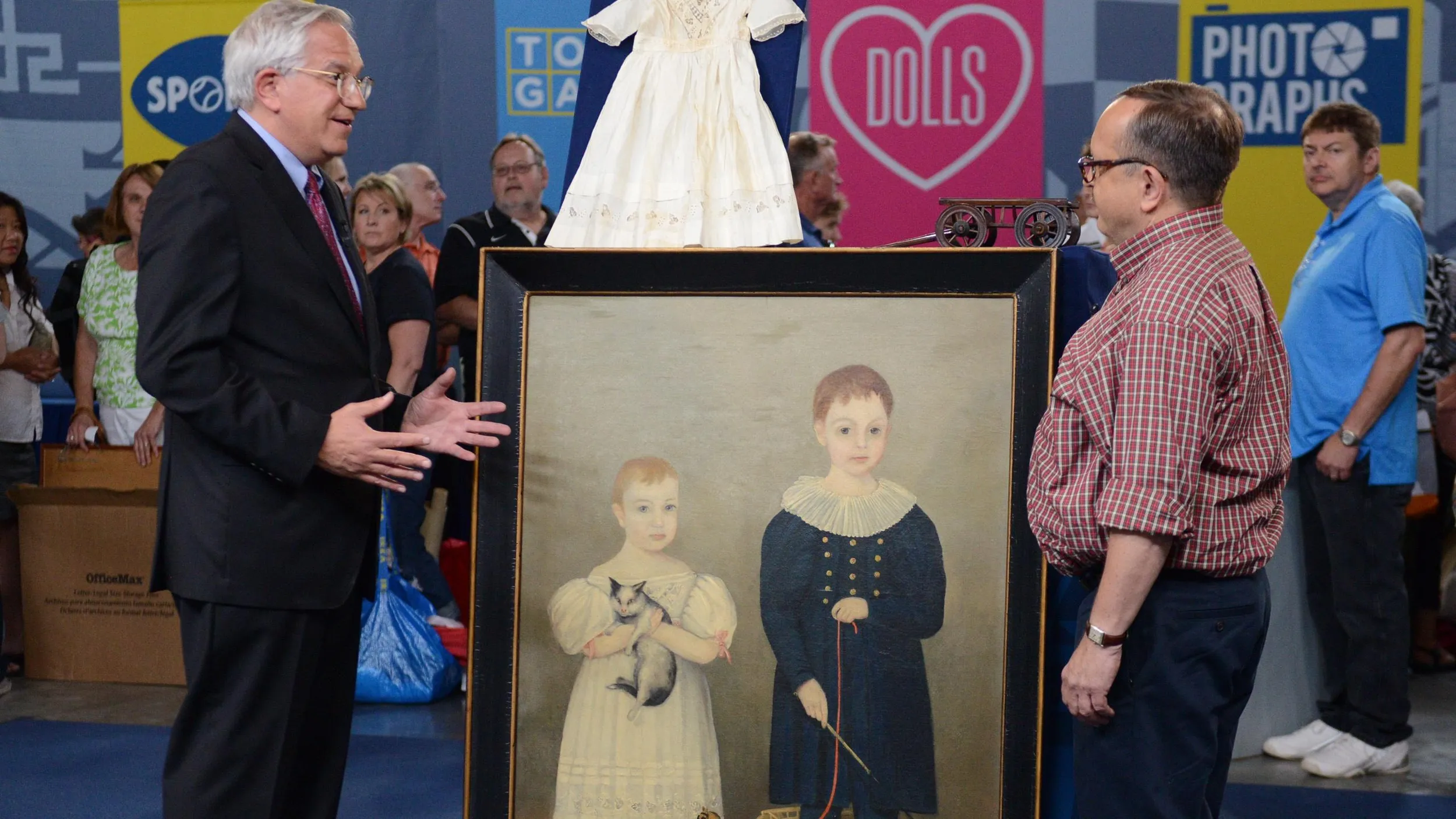GUEST: I went to an auction, and I found a scrapbook down in the basement. And it was all dusty, it was up on the shelf, and I took it down and I started to look through it. Looked like it had some interesting things, didn't really see these. Thought I'd bid on it.
APPRAISER: What did the scrapbook sell for, if you don't mind me asking?
GUEST: $50.
APPRAISER: $50. So these ticket stubs are from the 1920 World Series.
GUEST: Okay.
APPRAISER: Which was between the Brooklyn Robins, not the Dodgers-- they were called the Robins…
GUEST: Okay, okay.
APPRAISER: …Because of their manager, Wilbert Robinson-- and the Cleveland Indians.
GUEST: Okay.
APPRAISER: These two are from games three and four in Cleveland.
GUEST: Okay.
APPRAISER: So these are actually the sixth and seventh games of the World Series. The Brooklyn Robins had the first three games at Ebbets Field, then at Dunn Field here in Cleveland, the Cleveland Indians hosted the teams. And the Indians won the World Series in the seventh game, five games to two. Back in 1920, it was a best-of-nine World Series. That's why we have a team winning five games to two. And it was a very important World Series. Obviously, it was the first for the Cleveland Indians, but what was cool about it was there was an unassisted triple play in game five. Bill Wambsganss famously had an unassisted triple play in the World Series, one of the most famous plays in World Series history.
GUEST: Okay.
APPRAISER: So, it's a remarkable series for that alone. There was a grand slam in game five, and the Cleveland Indians basically dedicated the season to their fallen comrade, Ray Chapman, who had been killed earlier in the season by a bean to the head.
GUEST: Really.
APPRAISER: A bean ball to the head by Carl Mays…
GUEST: Wow.
APPRAISER: …And it was a terribly tragic…
GUEST: Yeah.
APPRAISER: …Event in baseball history, and it really spurred on the team to eventually win the World Series. Tickets are a great collectable. A stub like this, though, you're dealing with a very old piece of paper here that could easily disappear over the years.
GUEST: Yeah.
APPRAISER: That's why scrapbooks are a great thing to find –
GUEST: Right, right, right.
APPRAISER: - and to look through and see, you know, what you could find.
GUEST: Right, right.
APPRAISER: So, these are wonderful treasures. Game six is a good one, but game seven is very important.
GUEST: Is it.
APPRAISER: Because it is that clinching game…
GUEST: Uh-huh.
APPRAISER: …And people love the clinching game ticket.
GUEST: Uh-huh.
APPRAISER: There are some condition issues. These were glued down.
GUEST: Yeah.
APPRAISER: So there's some glue on the back of the tickets.
GUEST: Yeah.
APPRAISER: But overall, they present very nicely…
GUEST: Okay.
APPRAISER: …And that's what collectors like.
GUEST: Okay.
APPRAISER: Well, I would put a retail value on these ticket stubs at about $2,000.
GUEST: Really? Nice, excellent!
APPRAISER: Yeah.
GUEST: Nice, nice, nice. That’s great!
APPRAISER: So, not bad for a $50 investment.
GUEST: No, no, no-- that's exciting, that's neat. Excellent. (laughing) Thank you!



